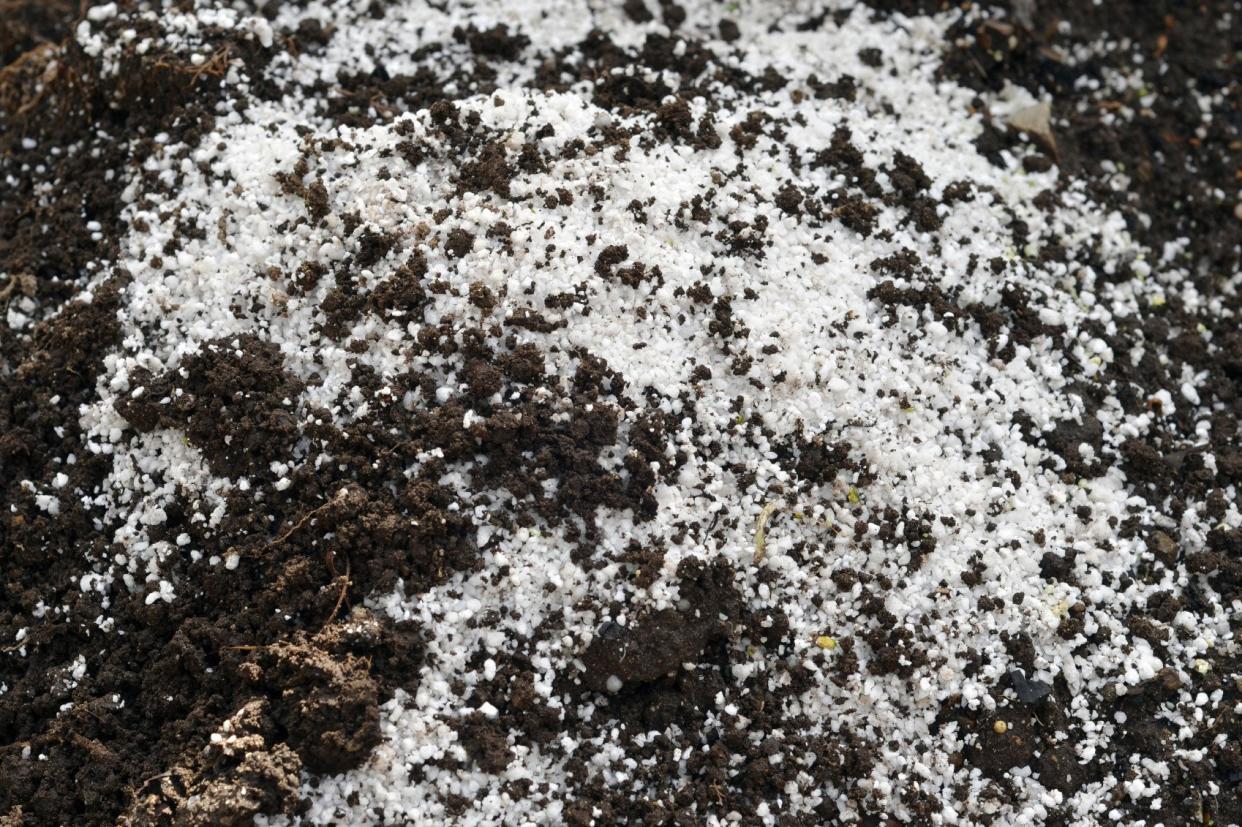Perlite Soil: Everything A Gardener Needs To Know

A Gardener’s Guide To Perlite
You may wonder about perlite soil and what it is made of. Maybe you are familiar with perlite as an element in potting soil or soilless growing medium but are there other perlite uses? Is there a perlite alternative? What is perlite made of?
What is Perlite Made Of?
Perlite is one of several components often found in soilless growing material. Perlite is a natural volcanic mineral that is ultra-lightweight, absorbent, and porous. This volcanic material is crushed, run through a screen and then heated to a super high temperature where it expands, resulting in a material that is sterile, retains up to 3-4 times its weight in water and is extremely lightweight. When perlite is heated, it pops rather like popcorn until it looks a bit like white polystyrene.
Perlite vs. Vermiculite
There are several differences between perlite and vermiculite but the most distinct is their water retention capability. Perlite may retain water 3-4 times its weight, but vermiculite absorbs up to 16 times its weight!
Vermiculite is also a volcanic material but unlike perlite, it contains minerals such as magnesium, iron, and aluminum.
Both products can be found in soilless or potting mediums and both come in various grades but which is better really depends on specific growing needs. If water retention is the goal, vermiculite is the clear winner. But if better aeration and drainage are most important, perlite is your best choice. Vermiculite also has traces of minerals that can be beneficial to plants but not in such an amount that supplemental nutrients won’t be necessary.
Is Perlite Toxic?
Perlite is a naturally formed material and, if excess quantities aren’t involved and proper ventilation is provided, it shouldn’t be toxic. That said, perlite (and vermiculite) are excessively dusty and inhalation of this dust can cause irritation in the respiratory tract or skin irritation. So, in an abundance of caution, wear gloves and a mask when using this product.
Common Perlite Uses
Perlite is added to soil mediums for its water retention but more importantly for its ability to aerate soils. But perlite has a multitude of other uses, many of which are surprising.
Potting Mix Additive
Perlite is added to potting mixes to speed germination and root growth, improve aeration, drainage and insulation. It also lightens soil, improving heavy clay soils.
Soils for cacti and succulents often contain perlite which ensures the water will not become trapped around the roots resulting in “wet feet.”
If you want to make your own potting mix, a ratio of 1:4, perlite to compost, is recommended.
Propagation Medium
The use of perlite alone is a terrific option for propagation especially for plants like cacti and succulents. A soilless mix containing perlite is also a good propagation option. Look for a finer grade of perlite for use as a propagation medium.
Seed Starting Medium
Seed starting mediums are often soilless. Soilless mixes minimize disease, provide good aeration and drainage and are lightweight. They are often made up of inorganic, organic and even synthetic ingredients.
Perlite is often a component of soilless seed starting mixes. These mixes can be purchased or made at home. The simplest recipe for a soilless mix is equal parts perlite (or vermiculite) and sphagnum peat moss. Moisten the mix before sowing seeds in flats or pots.
Hydroponics
In hydroponic systems, roots are grown in perlite which is supplied with a nutrient solution. The perlite allows the correct amount of water and oxygen to reach the root systems of the plants. Research indicates that plants grown with perlite produce a heavier crop than those without the use of the volcanic material.
Pros and Cons of Perlite for Plants
As with most things, perlite has good and bad qualities. Here are some perlite advantages and disadvantages.
Advantages of Perlite
Perlite is quite porous and can hold 3-4 times its weight in water although vermiculite is even better at water retention.
Perlite retains more oxygen than other growing mediums and the fact that it is sterile makes it a perfect option for starting seeds.
Perlite is fairly inexpensive and can be reused provided it is steam pasteurized. Sterile perlite is immune to microorganisms making it a disease-free soil medium.
Disadvantages of Perlite
While the fact that perlite is lightweight works in some scenarios, it is also easy to wash away which means it is not useful in flood-and-flush hydroponic systems.
Perlite doesn’t retain water well in hydroponic systems when used alone.
The dust from perlite can be an irritant to both respiratory passages, skin and eyes, especially in a greenhouse setting with fans blowing the dust around.
Perlite is prone to algae growth that can foster both fungal gnat and irrigation issues.
Non-Gardening Uses
Perlite is used in construction and manufacturing; particularly added to cement and plaster, insulation or filtration systems. Perlite is often added to cat litter to make it lighter. It is also used in foundries, beer manufacturing (for filtering purposes), ceramics as a clay additive and is even used in the explosive industry.
On the subject of filtering, perlite is often used in aquatic filtration either in commercial pools or even sewage systems.
Perlite is also used in biotechnology due to its resistance against microbial attacks, its non-toxicity, and thermal and mechanical stability.
Perlite is also used in the cosmetics industry in products such as facial and body scrubs, shower gels, and even dandruff shampoos. It can also be found in matte cosmetic powders and products for oily skin.